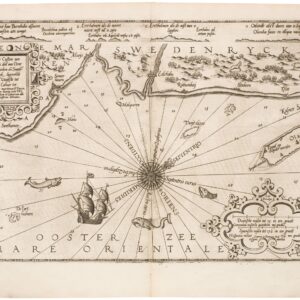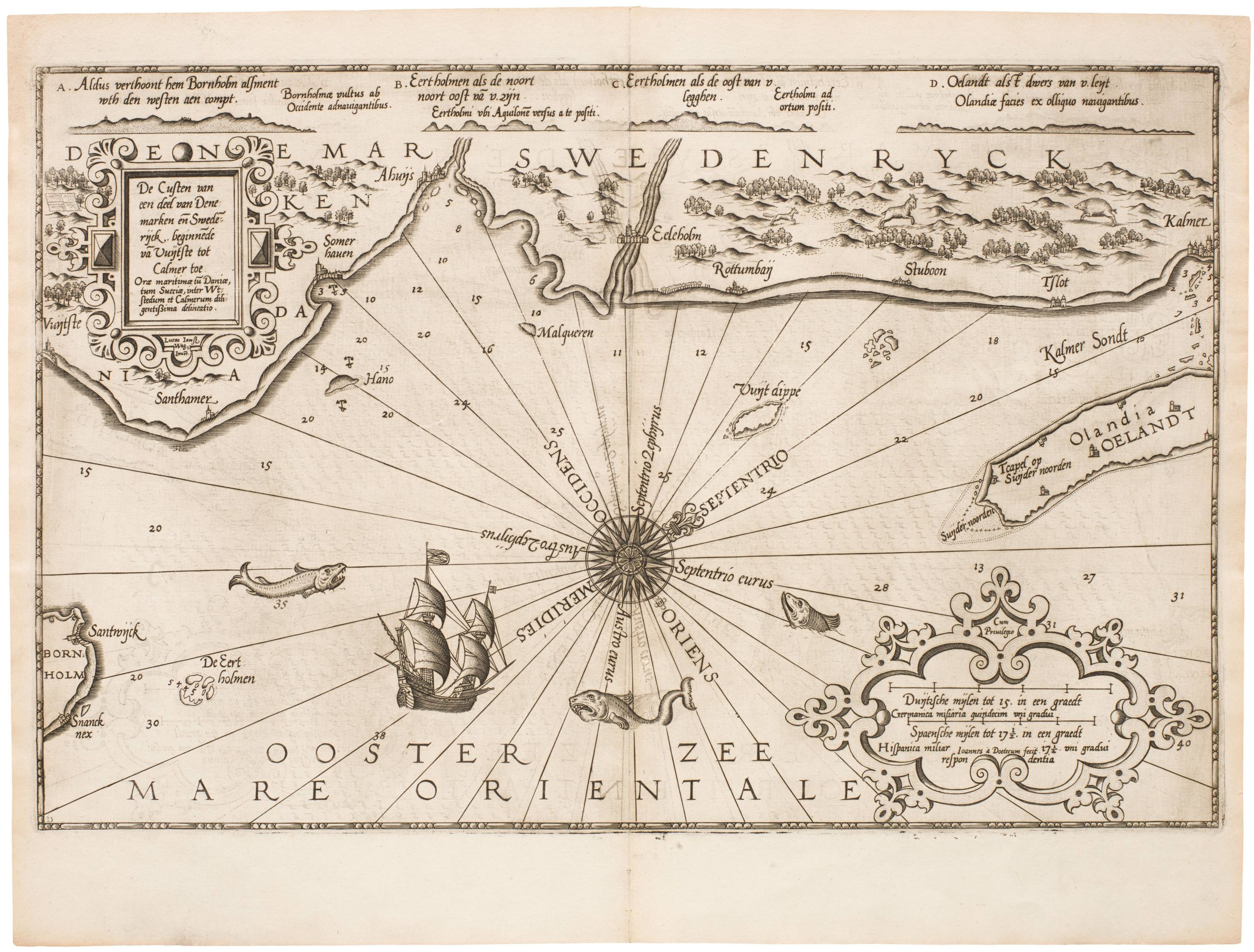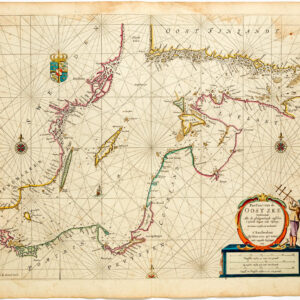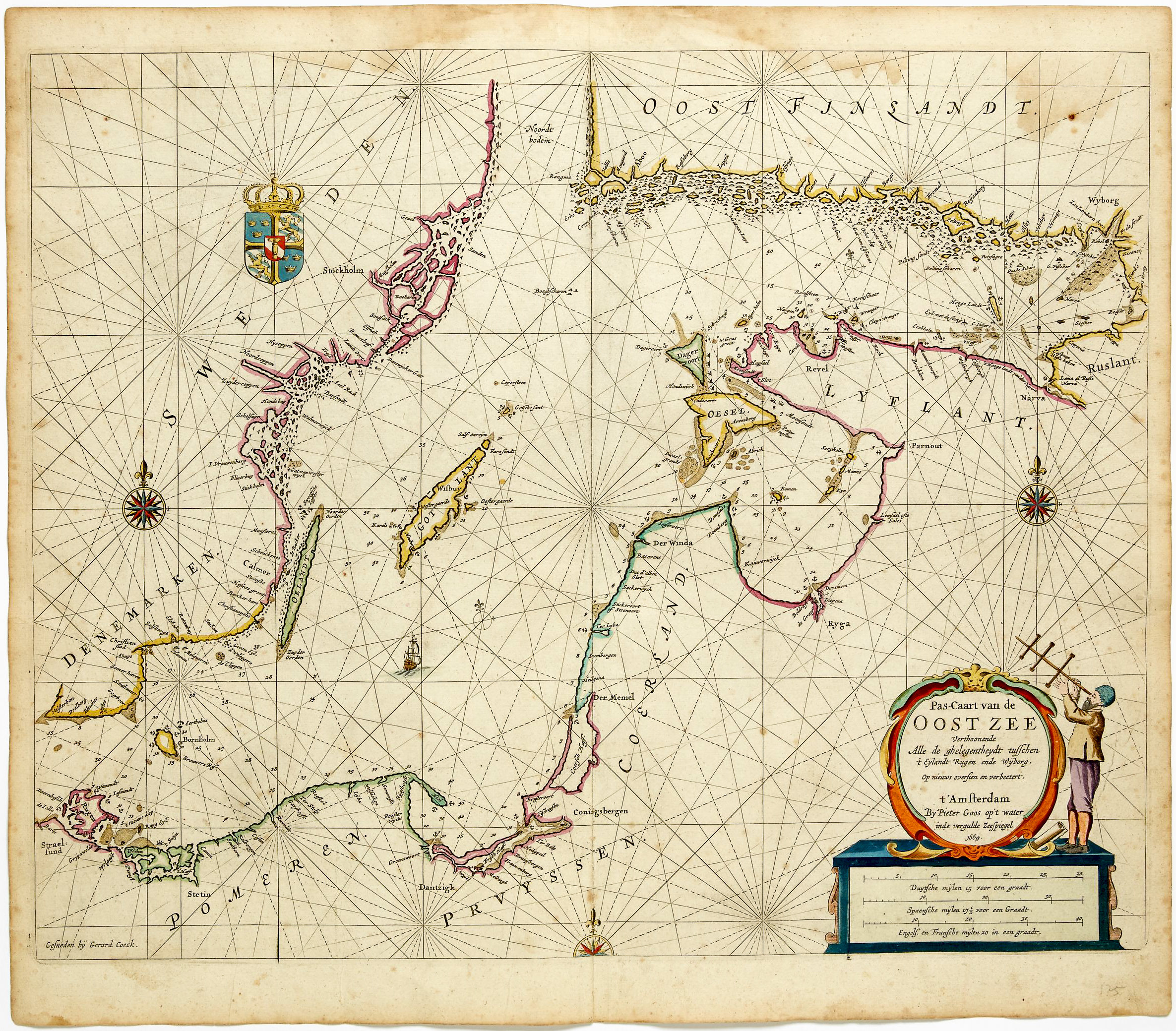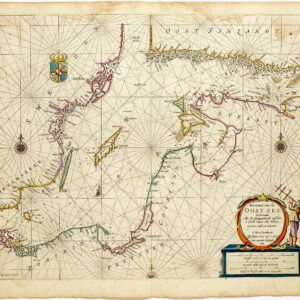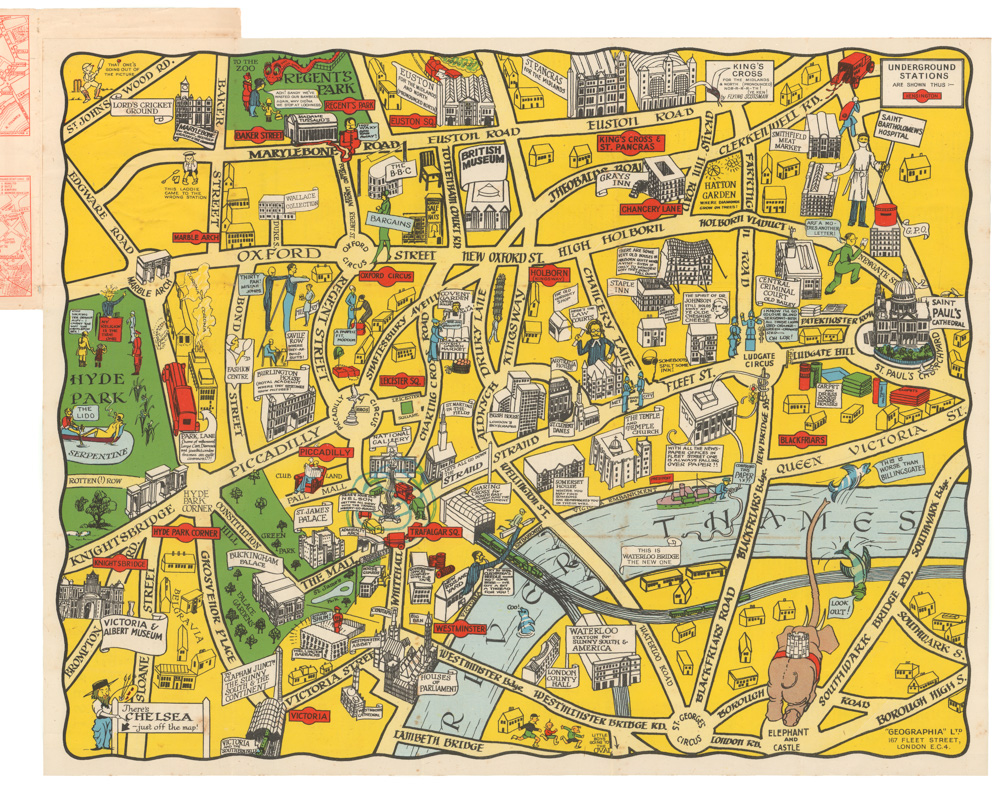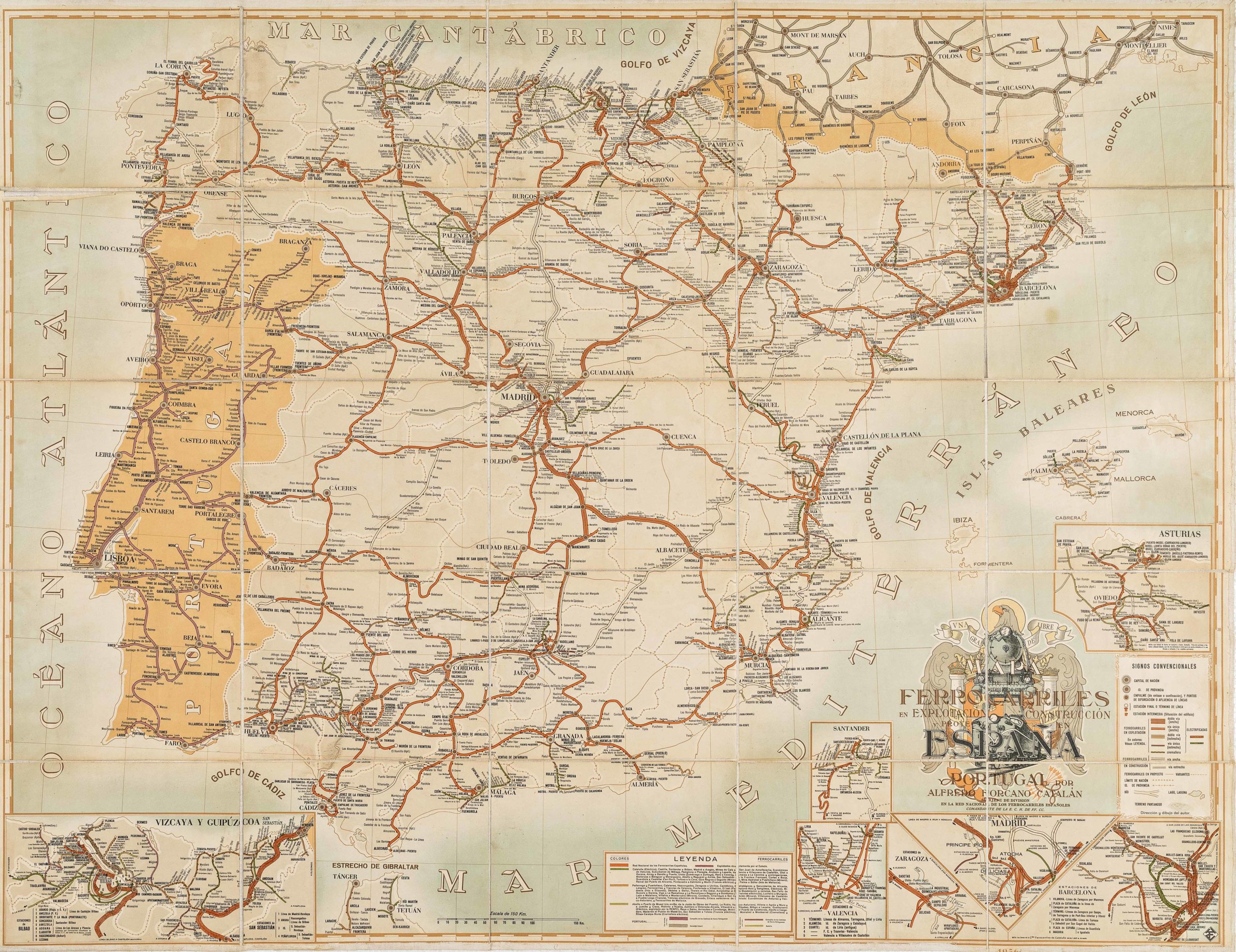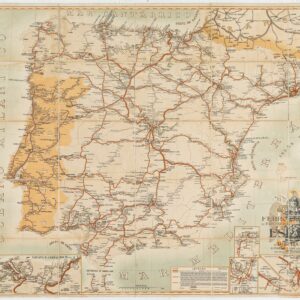Blaeu’s stunning map of Iceland.
Tabula Islandiae.
$1,000
1 in stock
Description
An iconic early map of Iceland based on the influential works by Ortelius and Mercator. Published by William Janszoon Blaeu in the first half of the 17th century, this map showcases Iceland’s remarkable landscape with sea monsters, sailing ships, and an ornate title cartouche embellished with reclining nereids overseeing the fates of sailors. Noteworthy features include the eruption of Mount Hekla, the fjord misrepresentation of Lagarfjót, and the imaginary Gouberman islands off the western shore.
Reynir Grétarsson, the author of Mapping Iceland, recognizes the significance of this map, which departed visually from its predecessors. While incorporating toponyms from the earlier Ortelius map, the map credits Joris Carolus as its source, drawing on his visits to Iceland. However, Blaeu may have utilized Carolus’ name to enhance the map’s authority without relying on his information exclusively.
Cartographer(s):
Willem Janszoon Blaeu (1571-1638) was one of the most important Dutch geographers and mapmakers of the 17th century. He was born the son of a herring merchant but traded fishmongering for studies in mathematics and astronomy. Blaeu’s first important breakthrough was winning an apprenticeship with the famous Danish astronomer Tycho Brahe. Working at Brahe’s Uranienborg observatory on the island of Hven, Blaeu learned various disciplines and technical skills. These included mathematics, astronomy, instrument-making, and more esoteric disciplines such as alchemy. Returning to his native Holland, Blaeu established a publishing business in Amsterdam. He sold instruments and globes, printed maps, and his own editions of some of the great philosophical works of contemporary intellectuals like Descartes and Hugo Grotius. Achieving notoriety as a cartographic pioneer, Blaeu was appointed Chief Hydrographer to the powerful Dutch East India Company, a position he held until he died in 1638.
When Willem died, his sons Cornelis (1610-1648) and Joan (1596-1673) took over the business. Joan had originally trained as a lawyer but never took up the practice, preferring to work on maps with his father. After Willem’s death, Joan continued publishing his father’s and his own maps. He also assumed his father’s position as a hydrographer for the Dutch East India Company. Towards the end of his life, Joan would dramatically expand his father’s Atlas Novus (1635), turning it into his own masterpiece, the Atlas Maior (1662-72).
When Willem died, his two sons Cornelis (1610-1648) and Joan (1596-1673) took over the business. Joan had originally trained as a lawyer, but never took up practice, preferring to work on maps with his father. After Willem’s death, Joan continued to publish both his father’s and his own maps. He also assumed his father’s position as hydrographer for the Dutch East India Company. Towards the end of his life, Joan would dramatically expand his father’s Atlas Novus (1635), turning it into his own masterpiece, the Atlas Maior (1662-72).
Condition Description
Repaired tear in the lower part of the centerfold and rumpled corner; otherwise in great condition and a lovely image.
References
